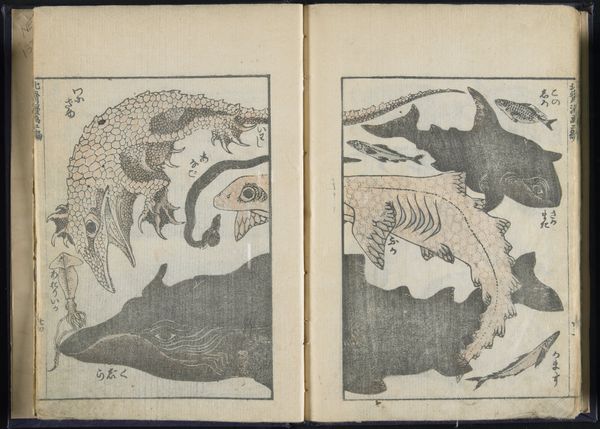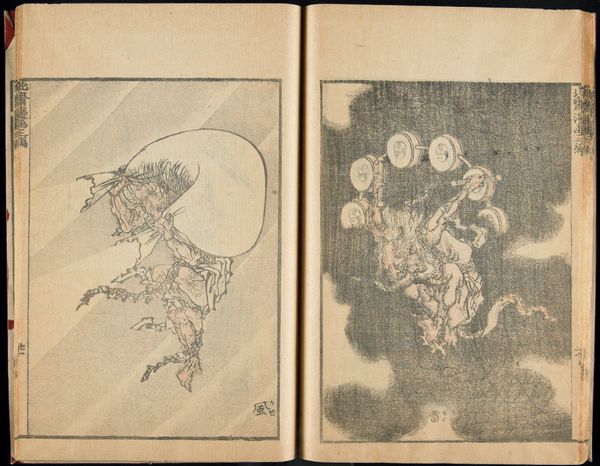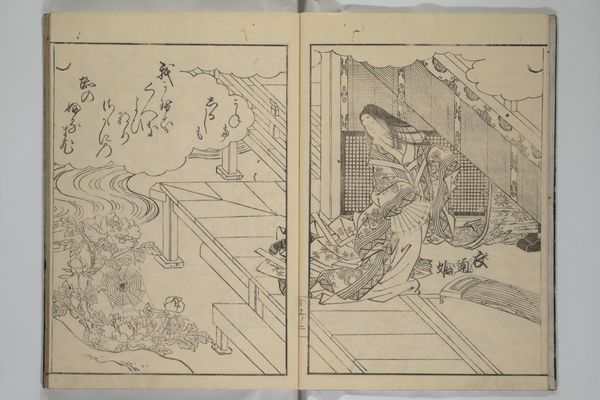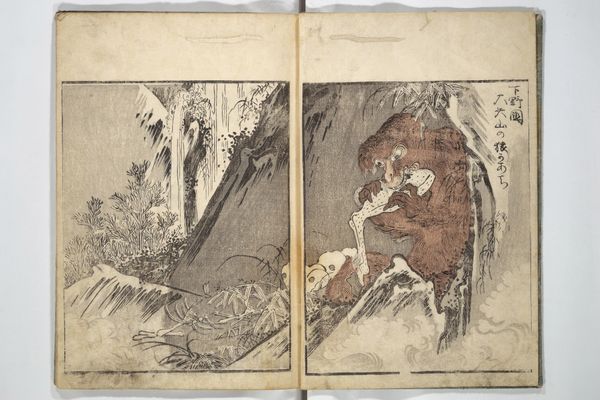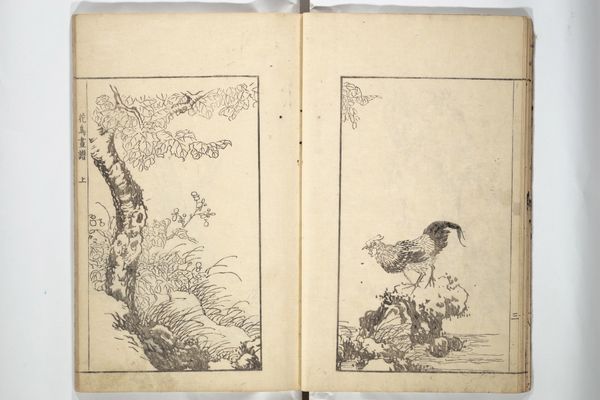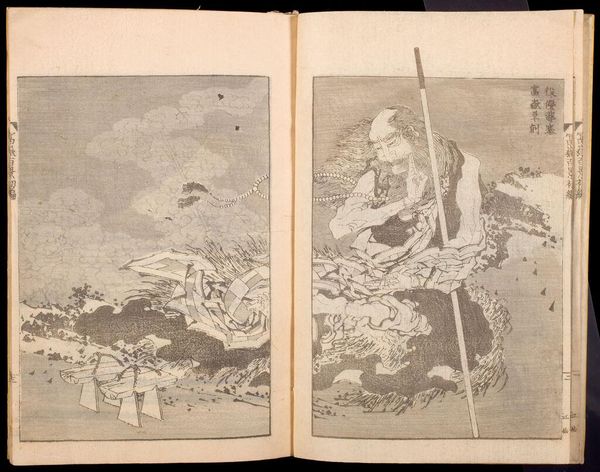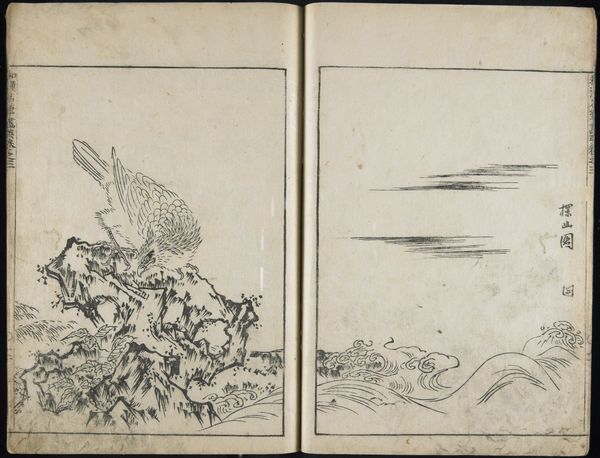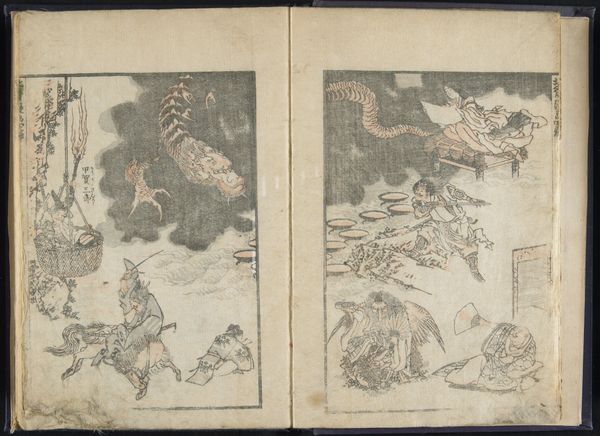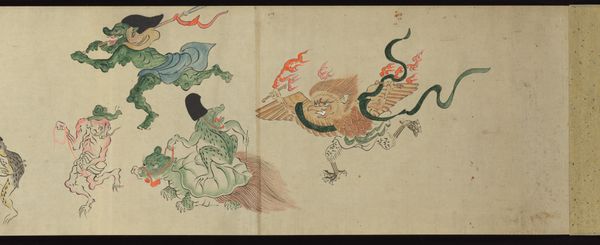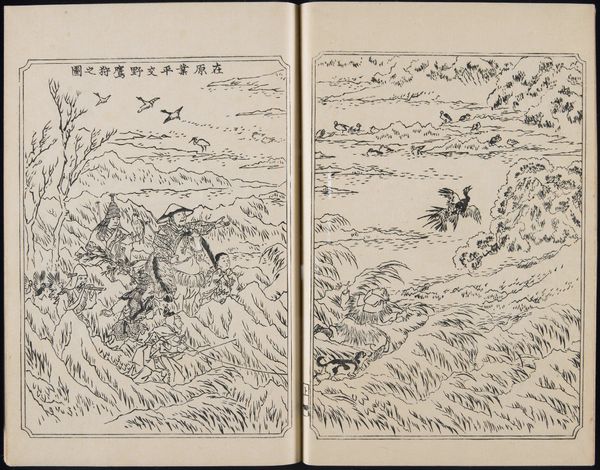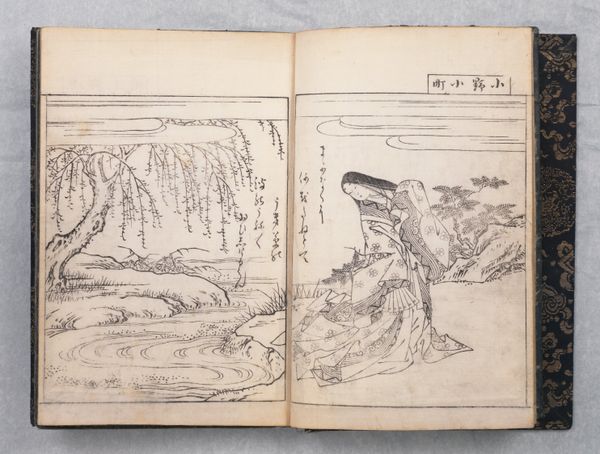
Transmitting the Spirit and Revealing the Form of Things- Hokusai's Sketchbooks 1849
0:00
0:00
drawing, print, paper, ink, woodcut, frottage
#
drawing
# print
#
book
#
asian-art
#
sketch book
#
landscape
#
ukiyo-e
#
japan
#
paper
#
personal sketchbook
#
ink
#
woodcut
#
abstraction
#
frottage
Dimensions: 9 1/4 x 6 7/16 x 1/2 in. (23.5 x 16.3 x 1.2 cm)
Copyright: Public Domain
Curator: Here we have a look into the artistic process, through a page from “Transmitting the Spirit and Revealing the Form of Things—Hokusai’s Sketchbooks.” Produced around 1849 by Katsushika Hokusai, it presents ink drawings transformed into a printed form. Editor: There’s a haunting, theatrical quality. The figures emerge from deep, inky blackness, heightened by the crisp lines defining form against the abyss. Curator: Hokusai's sketchbooks offer a glimpse into his mind, bridging observation and imagination. The dragon, in particular, stands as a powerful symbol, seen alongside a human figure who seems caught in the midst of performing in a stylized manner. Editor: It evokes classical theater, maybe even a Kabuki performance. I wonder about the dragon's context. It's not just decorative; it feels symbolic of untamed nature or chaotic energies. It's forcing me to wonder about the nature of power within this image, and if that performative figure on the right could have any? Curator: Dragons, and figures with stylized movements, permeate much of Edo period art, including Hokusai's works. One interpretation might be as representations of the formidable forces, whether spiritual or political, that governed society at the time. Think about how these images served not only artistic pursuits but also broader cultural purposes. Editor: This makes me question the access and intended audiences for the sketchbook, if it would have served a purpose for the broader public, given its status as a "personal sketchbook". Was this artist wrestling with ideas of cultural strength and governance privately, for later public distribution, or neither? Curator: Well, Hokusai's "sketchbooks" as we see them now may not fully reflect their original, intended format. These are later collections that serve to provide the public a look into the world of an artist of this time. And how wonderful that museums allow for such dialogues centuries later. Editor: Absolutely, it’s these fragments of the past that remind us of the complex interplay between the personal and the political, offering new views of our own current landscape.
Comments
No comments
Be the first to comment and join the conversation on the ultimate creative platform.
